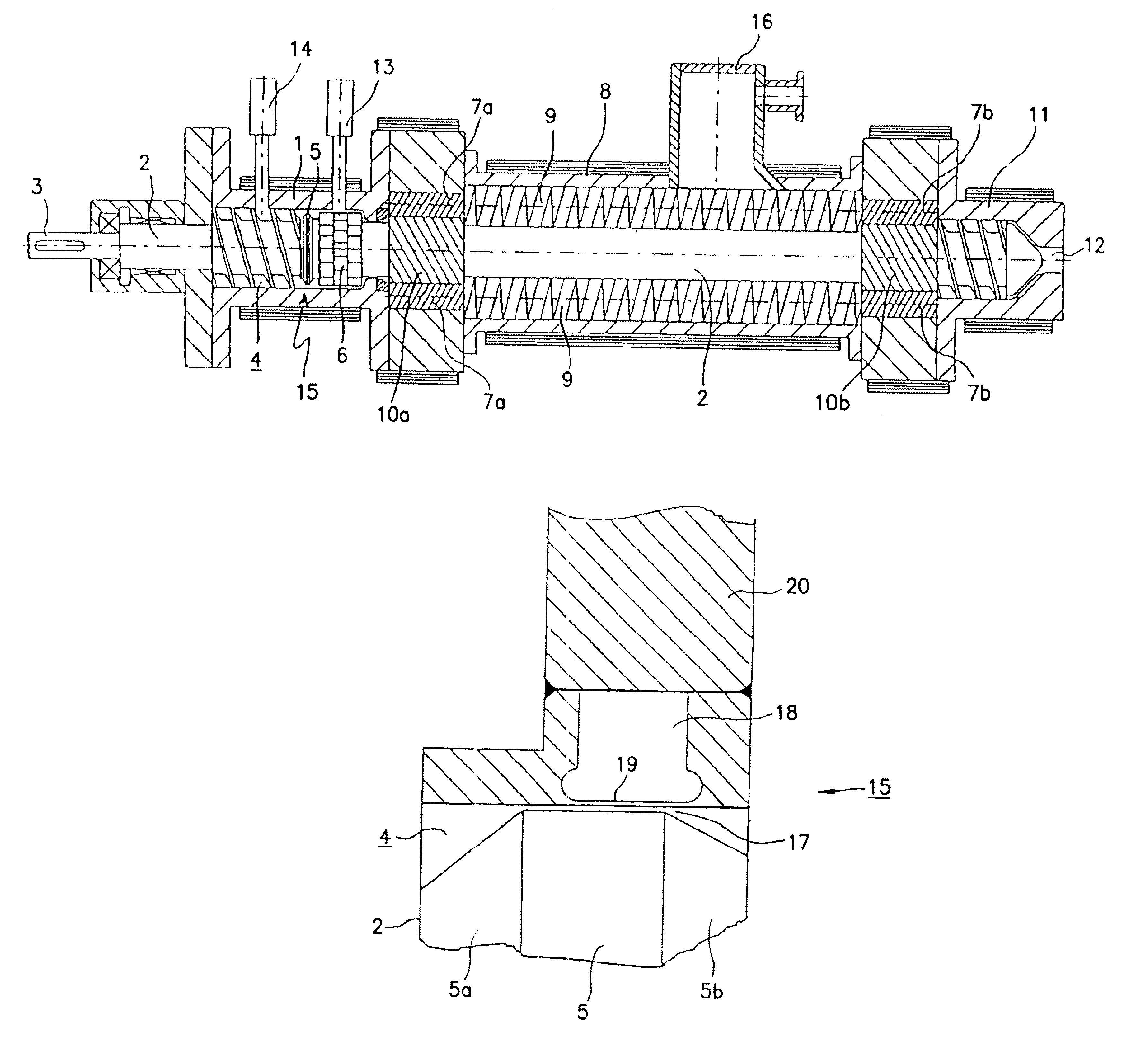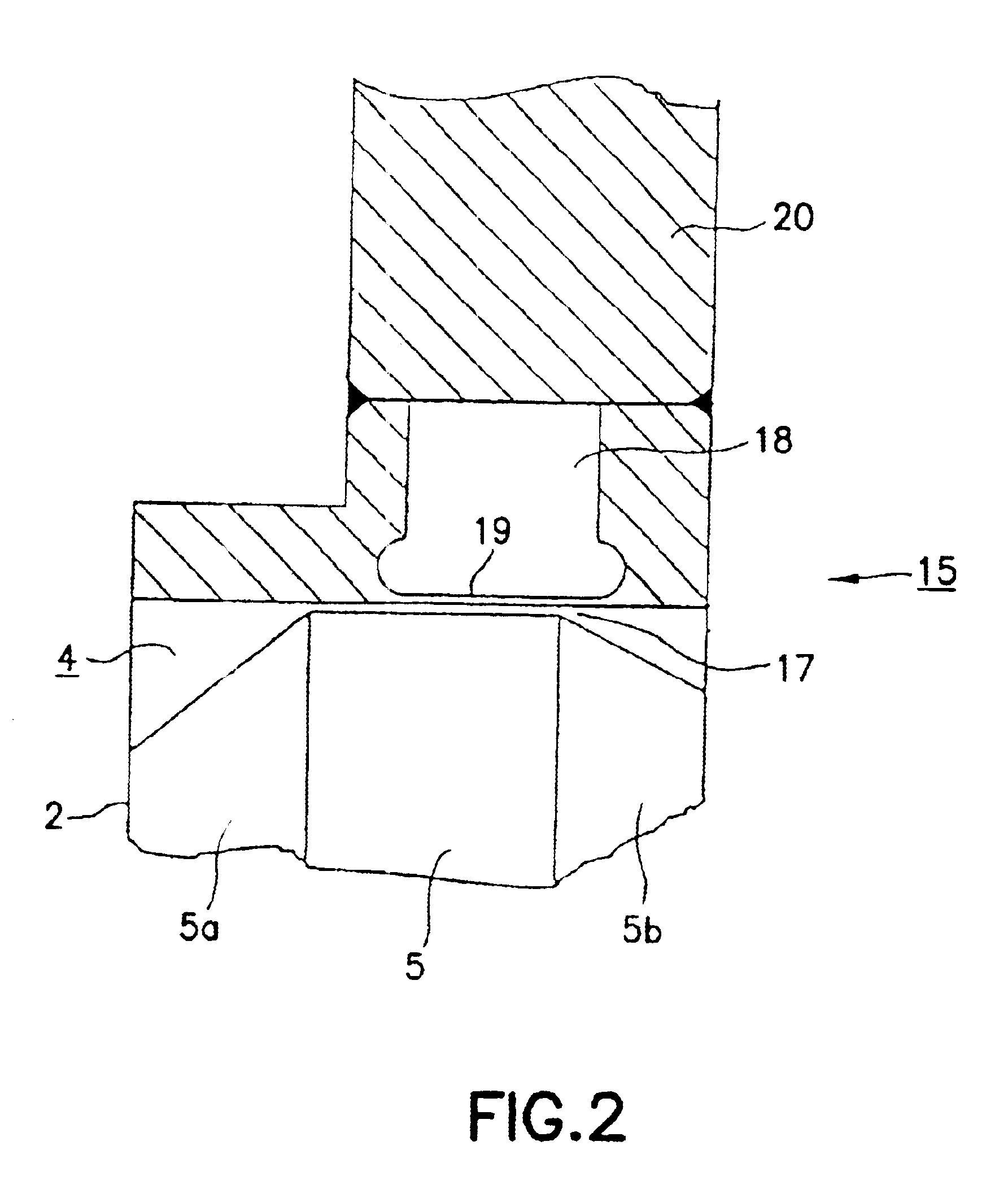Extruder comprising blister mechanism
a technology of a blister mechanism and an extruder, which is applied in the direction of mixing/kneading with horizontally mounted tools, clay mixing apparatus, rotary stirring mixers, etc. it can solve the problems of not being able to deal, adjustable pins and displaceable supporting elements not allowing uniform deformation over the cross section of the flow channel
- Summary
- Abstract
- Description
- Claims
- Application Information
AI Technical Summary
Benefits of technology
Problems solved by technology
Method used
Image
Examples
Embodiment Construction
The schematic representation of the extruder in FIG. 1 shows an extruder barrel which is passed through by a screw shank 2 over virtually the entire axial length. The screw shank 2, provided with a journal 3 with fitting key, is rotationally driven by a motor (not represented) via a gear mechanism (likewise not represented). The barrel section 1 which directly adjoins the gear mechanism and the cylindrical surface of which essentially corresponds in diameter to the outside diameter of the screw of the screw shank 2 encloses a part of the extrusion space 4. The barrel section 1 is provided with a connecting piece of a melt feed 14. Consequently, the extruder represented is fed the material to be processed not in the form of granules or powder but in an already molten form. Directly following the screw of the screw shank 2 there is also arranged in the barrel section 1 a blister 15, which forms a restricted flow zone, so that the part of the extrusion space 4 lying upstream of the bli...
PUM
| Property | Measurement | Unit |
|---|---|---|
| Thickness | aaaaa | aaaaa |
| Thickness | aaaaa | aaaaa |
| Pressure | aaaaa | aaaaa |
Abstract
Description
Claims
Application Information
 Login to View More
Login to View More - R&D
- Intellectual Property
- Life Sciences
- Materials
- Tech Scout
- Unparalleled Data Quality
- Higher Quality Content
- 60% Fewer Hallucinations
Browse by: Latest US Patents, China's latest patents, Technical Efficacy Thesaurus, Application Domain, Technology Topic, Popular Technical Reports.
© 2025 PatSnap. All rights reserved.Legal|Privacy policy|Modern Slavery Act Transparency Statement|Sitemap|About US| Contact US: help@patsnap.com



